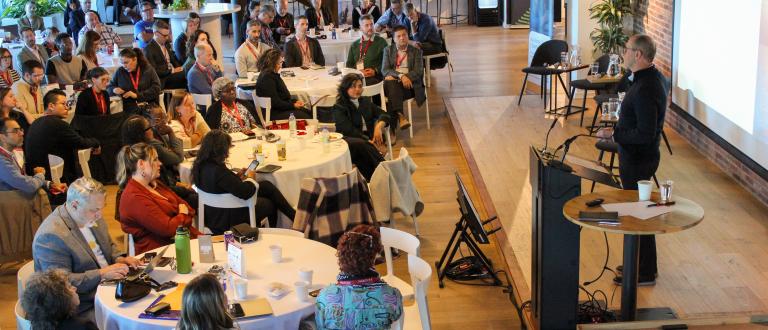Recently on the blog, we highlighted the need for reforms to Canada's system of grants and contributions. This is the funding that flows directly from federal departments to organizations, and businesses; $15 billion goes directly to charities and nonprofits each year to fund valuable community projects and key services.
For years, both the sector and the federal government itself have discussed the need for reforms to decrease the administrative costs of these agreements, increase efficiency, and remove significant barriers for many charities, all while maintaining accountability.
While progress on this issue has been slow in Canada, other jurisdictions have taken meaningful steps toward reforming the funding relationship between the government and the charitable sector. Today, we're looking at those cases for lessons and inspiration to inform our own advocacy on the issue.
New Zealand:
So often, Canadian nonprofits are burdened by excessive reporting requirements that do not vary by the size of the grant, or the history of the organization/project. Key guideline documents released by the New Zealand Treasury and the Department of Internal Affairs suggest solutions for this unequal administrative burden by outlining a risk-based approach to contracting with the nonprofit sector. This means that administrative requirements are commensurate with the size and risk of the funding.
In contrast, application processes, timelines, and reporting requirements in Canada are often established by federal departments without proper consideration of their impact on charitable operations, or even a clear understanding of the way charities (especially smaller ones) operate. The New Zealand Code of Funding Practice (2011) details the importance of both parties establishing a common understanding of the program or project goals, and setting mutual expectations. Agreements are to take into account what “the nonprofit expect[s] to achieve in relation to its own goals or mission and its accountabilities and mandate” (4). This approach prioritizes respect for the complementary skills that nonprofits provide, while acknowledging the need for government accountability, and seeks to balance the two.
Of particular interest are guidelines around investing in the long-term capacity of the nonprofit organization. New Zealand’s Guidelines for Contracting with Non-Government Organisations for Services Sought by the Crown notes that “the amount being paid by the Crown is compensation, not only for the NGO’s out-of-pocket costs in providing those services, but also for the cost of maintaining or building the capability of the NGO to continue to provide those services effectively in the future” (24).
While the articles of the Code are voluntary, the potential for a relationship-based funding model that acknowledges the broader mission and mandate of contracted organizations, and seeks to invest in their ongoing capacity, is promising—and is a model to be emulated.
The United Kingdom:
While yet to be widely applied, in 2018 the UK released its Civil Society Strategy: building a future that works for everyone, a blueprint for strengthening communities and the creation of social value. Chapter 3 specifically addresses questions of supporting charities and social enterprises. It acknowledges that the UK sector has undergone a similar shift to that witnessed in Canada, with “contract funding increasingly replacing grant funding”; (or as we might say, the move from core to project funding) at both the local and national levels. This dynamic causes significant disparities between the capacity of smaller, community-based organizations and larger charities.
The Strategy calls for a “simpler relationship” between the sector and the government with regular forums for consultation, emphasizes the need for charities to make their voices heard on key policy issues regardless of whether they are receiving government funds, and seeks to better serve the sector as part of the UK’s digital strategy. If these promises come to fruition, a foundation could be laid for productive contracting relationships.
Ontario:
The current Ontario government, with its new Ministry of Red Tape Reduction, has shown a renewed interest in grants and contributions—which they refer to as Transfer Payment Agreements—from the perspective of time and cost savings on both sides of the agreement, and greater streamlining of administration.
The Ontario Nonprofit Network and other provincial organizations have been working for years to make grants work better for charities, so they welcomed the announcement of Ontario’s Transfer Payment Consolidation Smart Initiative in November 2019. There are many more transfer payment agreements with Ontario nonprofits than there are nonprofit service delivery partners, meaning that one organization can be spending valuable time on multiple applications and reports to different ministries. The initiative institutes umbrella agreements, bringing all of an organization’s contracts with the government into one single agreement, which should reduce duplication and administrative costs for government and organizations.
This is encouraging news for the sector because, as the ONN observes: “Every hour that a nonprofit spends filling out cumbersome application forms, or trying to fit their budget numbers into program templates that differ from one to the next, is an hour they are not spending delivering services to people.”


